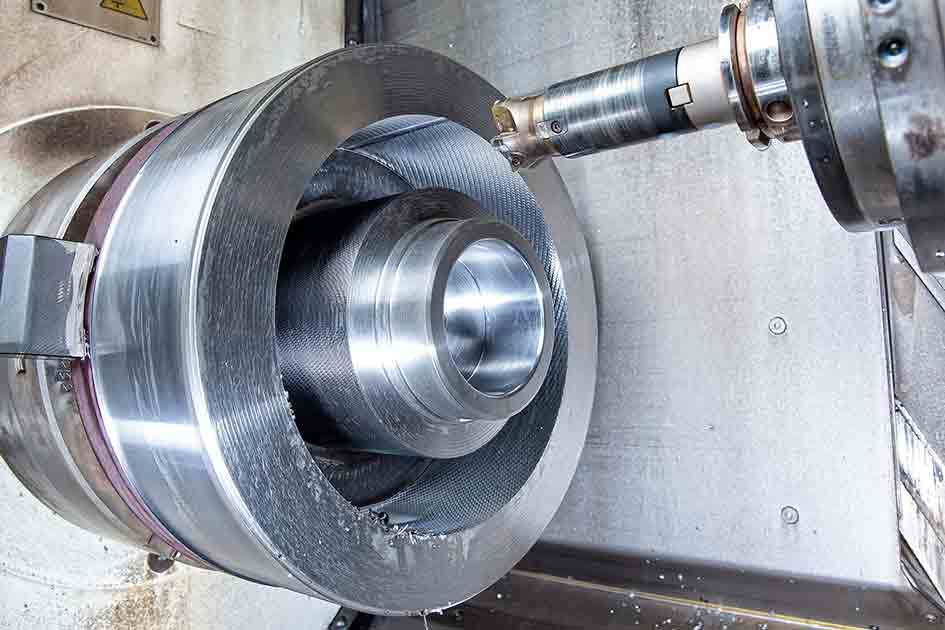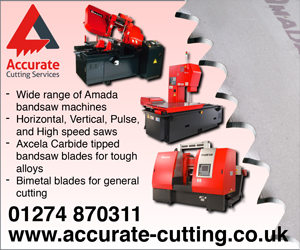Carbide insert and cutting tool manufacturer Horn reports an application at Jörg Bamann Mechanische Werkstatt, a job shop in Geretsried, Germany, where a Horn DAH high-feed, indexable-insert milling cutter in a B-axis lathe is able to helically interpolate a circular groove into a round steel workpiece 14 times faster than a toroidal mill.
The 42CrMo4 (1.7225) alloy steel billet, quenched and tempered to 1,000 N/mm2, requires a 40 mm wide groove having a 240 mm outside diameter and a depth of just less than 90 mm to be rough-machined. The component is a key part of a hydraulic rotator, used in construction and forestry for rotating attachments carried by excavators.
Seeking to optimise the groove machining process, owner Jörg Bamann approached Horn application engineer Korbinian Niedermeier, who recommended a high-feed milling solution. The subcontractor has been using Horn products for two decades, so knows the supplier well.
Bamaan said, “Before switching to milling, we tried to produce the recess in the component by axial turning, but it did not prove to be viable. We tried tool solutions from various manufacturers, but none of them had the technical capabilities we needed. Turning resulted in long chips and, due to the large groove depth, caused vibration that negatively affected the life of the inserts.”
Next, the subcontractor tried replacing the turning tool with a conventional, 5-flute, toroidal milling cutter with indexable inserts in the B-axis tool spindle of a DMG Mori CTX 800 TC turning-milling centre. The roughing process was faster than axial turning but resulted in vibration and a high level of noise. Furthermore, the machining time was still too long for Bamann. About 100 minutes were needed to produce the groove and each cutter was able to complete only 30 components before the inserts needed to be changed. Further process optimisation was called for.
Niedermeier proposed a 40 mm diameter, high-feed DAH mill with five triple-edged inserts. At a cutting speed (vc) of 150 m/min, the tool is helically interpolated into the rotating workpiece with a continuous infeed depth (ap) of 1 mm and 0.8 mm feed per tooth (fz). The new machining time for the recess is now just seven minutes per component, more than 14 times faster, and the life of the indexable inserts has increased threefold to 90 components per edge.
Bamann confirmed, “We are very happy with the result. Using the high-feed milling cutter has reduced the cycle time considerably and the load on the machine has also decreased, as cutting pressure and vibration are lower. There is still more potential for machining improvement.”
Established in 1964 and now in its second generation of ownership, Jörg Bamann Mechanische Werkstatt CNC mills and turns parts for customers in a variety of industries in batch sizes ranging from one-off to series production. The company’s many years of experience in processing steels including stainless, aluminium alloys, non-ferrous metals, titanium and plastics are testament to its expertise and versatility. The use of modern CAD/CAM systems enables components to be machined quickly and cost-effectively to meet customer requirements.





